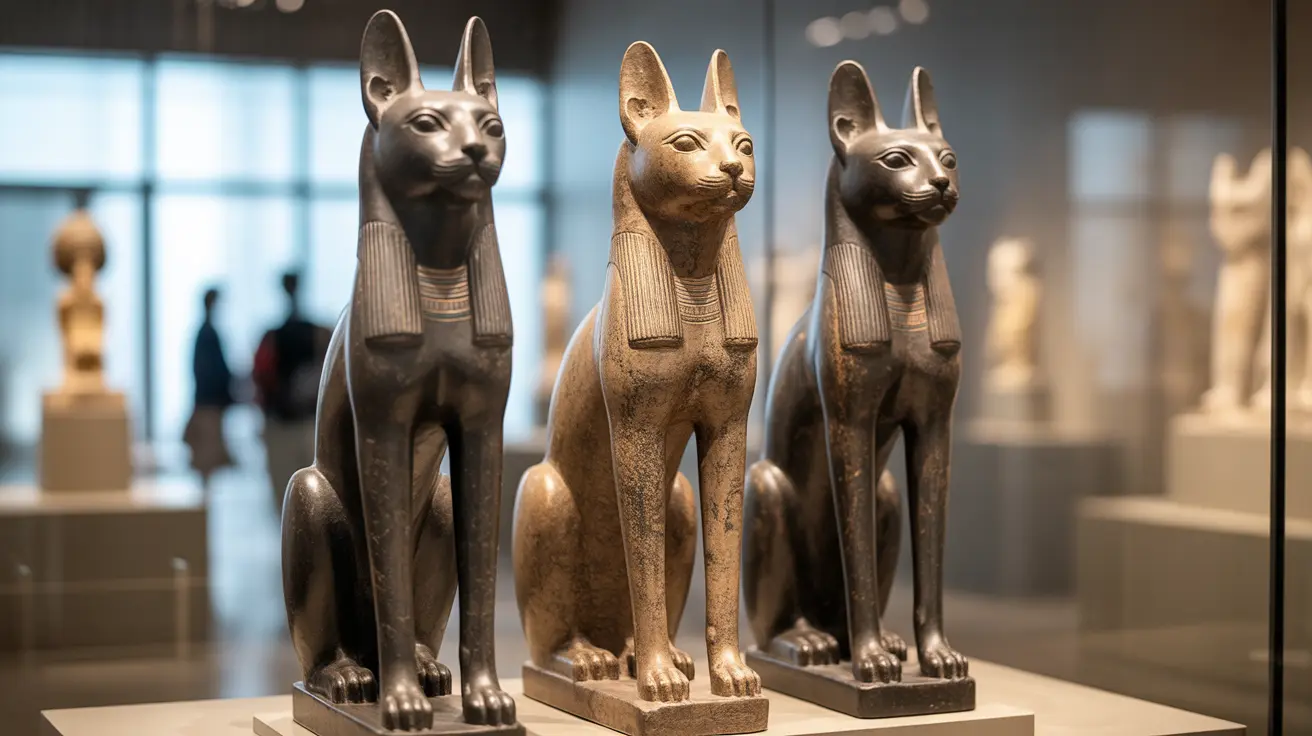The Walters Art Museum in Baltimore is set to unveil a captivating exhibition that bridges the ancient world's devotion to animals with modern scientific discovery. The "Soulful Creatures" exhibition showcases the fascinating practice of animal mummies in Ancient Egypt, offering visitors a unique glimpse into how this ancient civilization honored and preserved their animal companions.
The exhibition, which combines archaeological artifacts with cutting-edge research, demonstrates the deep connection between ancient Egyptians and their animal companions, from beloved household pets to creatures considered sacred incarnations of deities. This free exhibition promises to enlighten visitors about a practice that spanned thousands of years in ancient Egyptian culture.
Sacred Animals in Ancient Egypt
Ancient Egyptians' relationship with animals went far beyond mere companionship. Animals played crucial roles in religious practices and were often considered earthly manifestations of gods. Cats, associated with the goddess Bastet, and falcons, linked to the god Horus, were among the most revered creatures in Egyptian society.
Egyptian Animal Burial Rituals
The mummification process for animals followed many of the same careful procedures used for human mummies. Animals were treated with natron (a natural drying agent), carefully wrapped in linen bandages, and often decorated with intricate designs and religious symbols. These practices reflect the deep respect ancient Egyptians held for these creatures.
CT Scans and Modern Research
Modern technology has revolutionized our understanding of animal mummies. Through CT scans and X-ray analysis, researchers can now peek inside these ancient bundles without disturbing their wrappings. These scientific techniques have revealed fascinating details about mummification practices and sometimes unexpected contents within the wrappings.
Religious Offerings and Mass Production
Archaeological evidence suggests that animal mummification became a significant industry in ancient Egypt. Millions of mummified animals were produced as religious offerings, leading to what we now understand was an early form of mass production. This practice supported temples and priests while allowing everyday people to participate in religious ceremonies.
The Exhibition Experience
Visitors to the Walters Art Museum will encounter nearly 100 artifacts, including preserved animal mummies, decorated coffins, and related religious items. The exhibition offers a comprehensive look at how ancient Egyptians incorporated animals into their spiritual and daily lives.
Frequently Asked Questions
Why did ancient Egyptians mummify animals, and what roles did these animals play in their society?
Ancient Egyptians mummified animals to serve as religious offerings, sacred incarnations of gods, and companions for the afterlife. Animals like cats, ibises, falcons, and dogs were revered as earthly forms of deities such as Bastet and Horus, reflecting complex symbolic and spiritual roles.
What types of animals were commonly mummified in ancient Egypt, and were all mummies made the same way?
Commonly mummified animals included cats, ibises, falcons, dogs, baboons, crocodiles, fish, snakes, bulls, and scarab beetles. The mummification process involved organ removal, drying with natron, wrapping in linen, and resin coatings, but styles varied based on the animal's religious status and economic factors.
When and where is the "Soulful Creatures" exhibition held, and is there an admission fee?
The exhibition runs from September 27, 2025, to January 11, 2026, at the Walters Art Museum in Baltimore, Maryland. Admission is free, and there are special events like curator tours and talks during the exhibition.
Conclusion
This extraordinary exhibition at the Walters Art Museum offers a unique opportunity to understand the profound bond between ancient Egyptians and their animal companions. By exploring these preserved treasures and the stories they tell, visitors can gain insight into how an ancient civilization honored and remembered their beloved animals. The free admission ensures this fascinating glimpse into the past is accessible to all interested in exploring this remarkable intersection of animal care, religious practice, and archaeological discovery.






